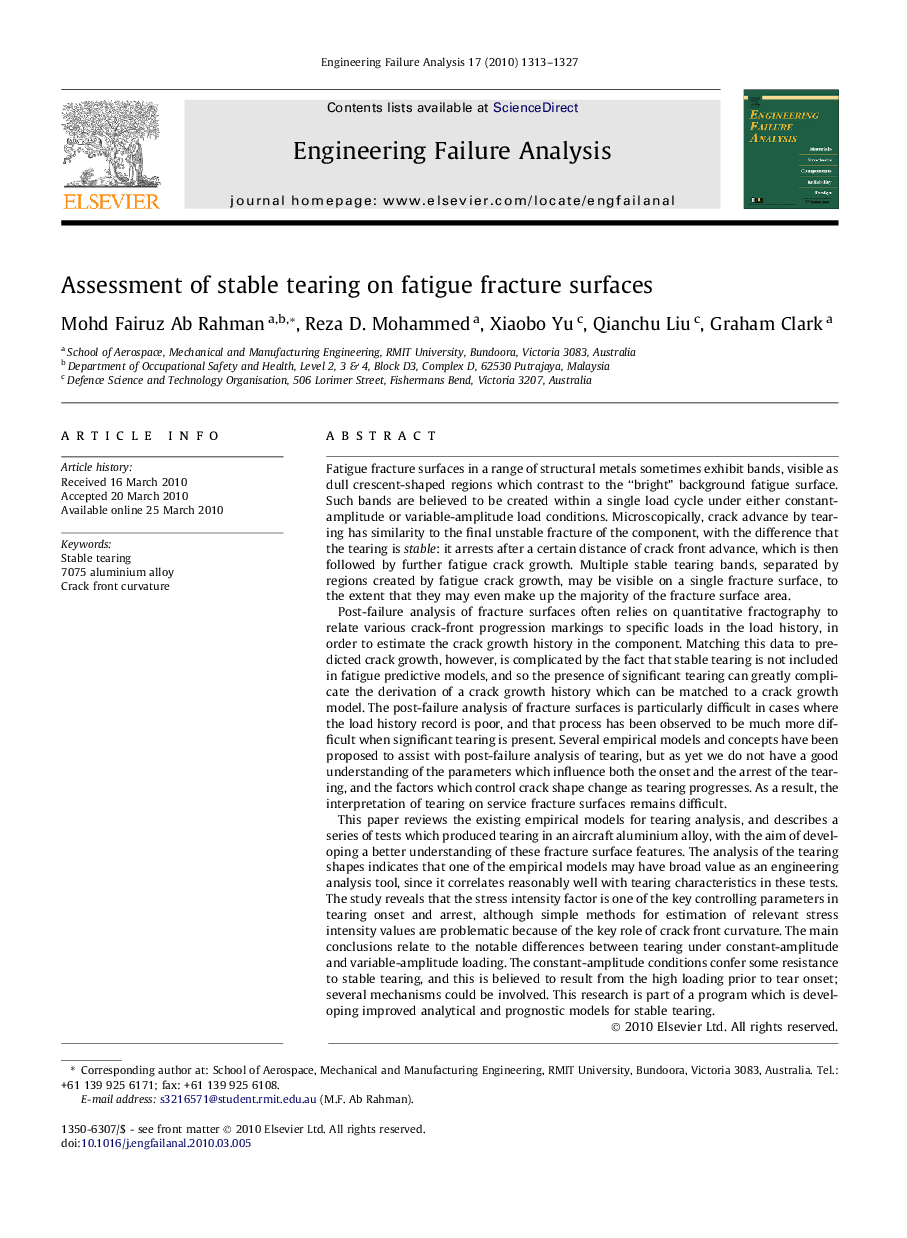| کد مقاله | کد نشریه | سال انتشار | مقاله انگلیسی | نسخه تمام متن |
|---|---|---|---|---|
| 769284 | 897381 | 2010 | 15 صفحه PDF | دانلود رایگان |

Fatigue fracture surfaces in a range of structural metals sometimes exhibit bands, visible as dull crescent-shaped regions which contrast to the “bright” background fatigue surface. Such bands are believed to be created within a single load cycle under either constant-amplitude or variable-amplitude load conditions. Microscopically, crack advance by tearing has similarity to the final unstable fracture of the component, with the difference that the tearing is stable: it arrests after a certain distance of crack front advance, which is then followed by further fatigue crack growth. Multiple stable tearing bands, separated by regions created by fatigue crack growth, may be visible on a single fracture surface, to the extent that they may even make up the majority of the fracture surface area.Post-failure analysis of fracture surfaces often relies on quantitative fractography to relate various crack-front progression markings to specific loads in the load history, in order to estimate the crack growth history in the component. Matching this data to predicted crack growth, however, is complicated by the fact that stable tearing is not included in fatigue predictive models, and so the presence of significant tearing can greatly complicate the derivation of a crack growth history which can be matched to a crack growth model. The post-failure analysis of fracture surfaces is particularly difficult in cases where the load history record is poor, and that process has been observed to be much more difficult when significant tearing is present. Several empirical models and concepts have been proposed to assist with post-failure analysis of tearing, but as yet we do not have a good understanding of the parameters which influence both the onset and the arrest of the tearing, and the factors which control crack shape change as tearing progresses. As a result, the interpretation of tearing on service fracture surfaces remains difficult.This paper reviews the existing empirical models for tearing analysis, and describes a series of tests which produced tearing in an aircraft aluminium alloy, with the aim of developing a better understanding of these fracture surface features. The analysis of the tearing shapes indicates that one of the empirical models may have broad value as an engineering analysis tool, since it correlates reasonably well with tearing characteristics in these tests. The study reveals that the stress intensity factor is one of the key controlling parameters in tearing onset and arrest, although simple methods for estimation of relevant stress intensity values are problematic because of the key role of crack front curvature. The main conclusions relate to the notable differences between tearing under constant-amplitude and variable-amplitude loading. The constant-amplitude conditions confer some resistance to stable tearing, and this is believed to result from the high loading prior to tear onset; several mechanisms could be involved. This research is part of a program which is developing improved analytical and prognostic models for stable tearing.
Journal: Engineering Failure Analysis - Volume 17, Issue 6, September 2010, Pages 1313–1327